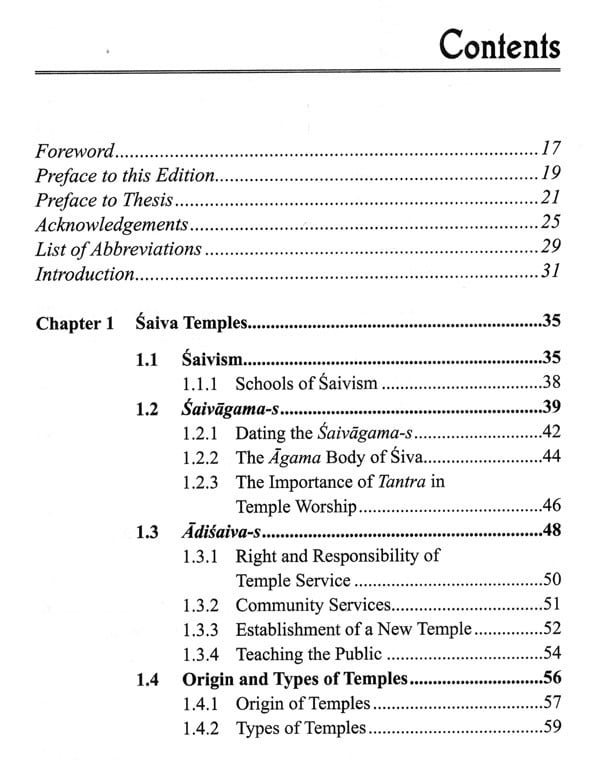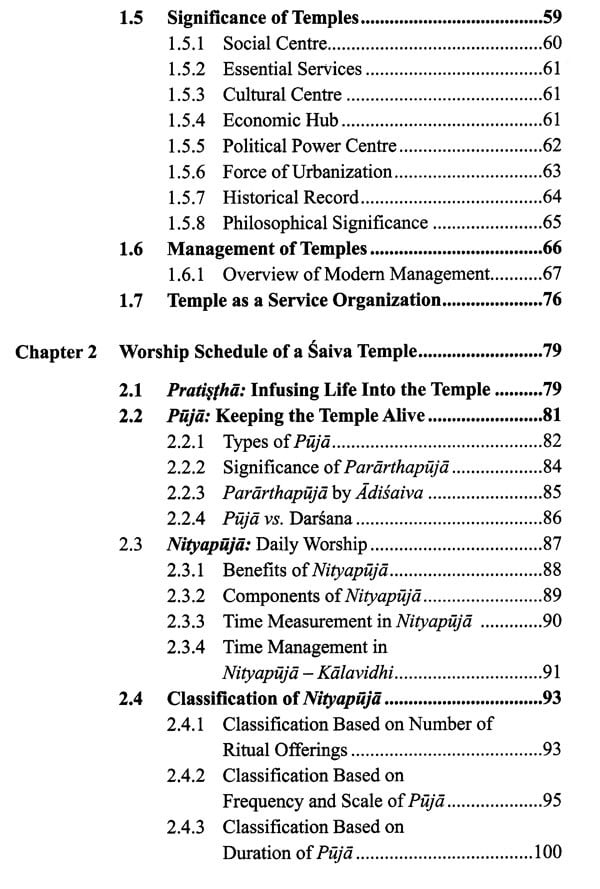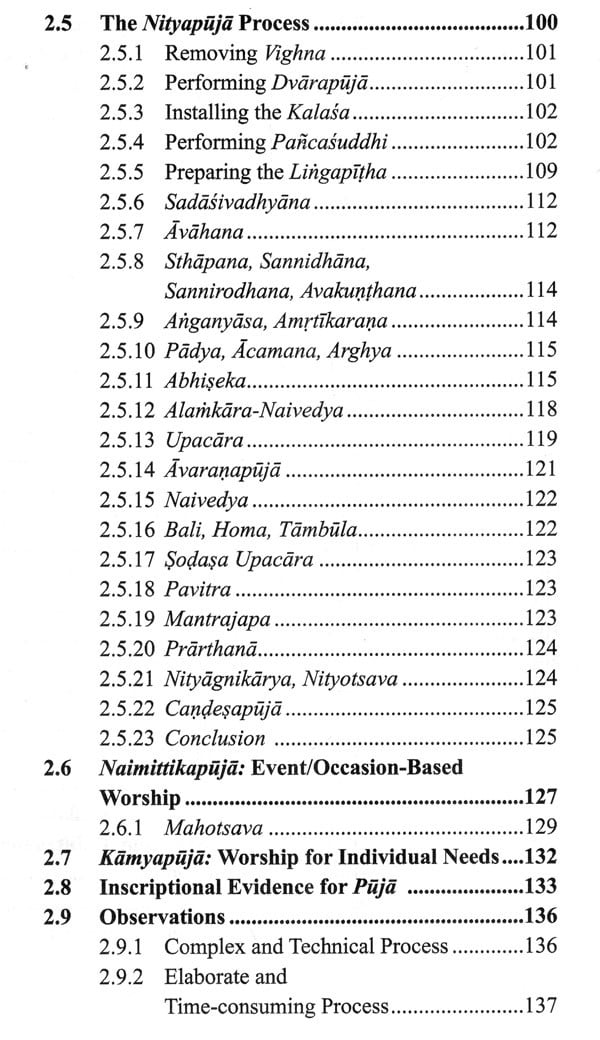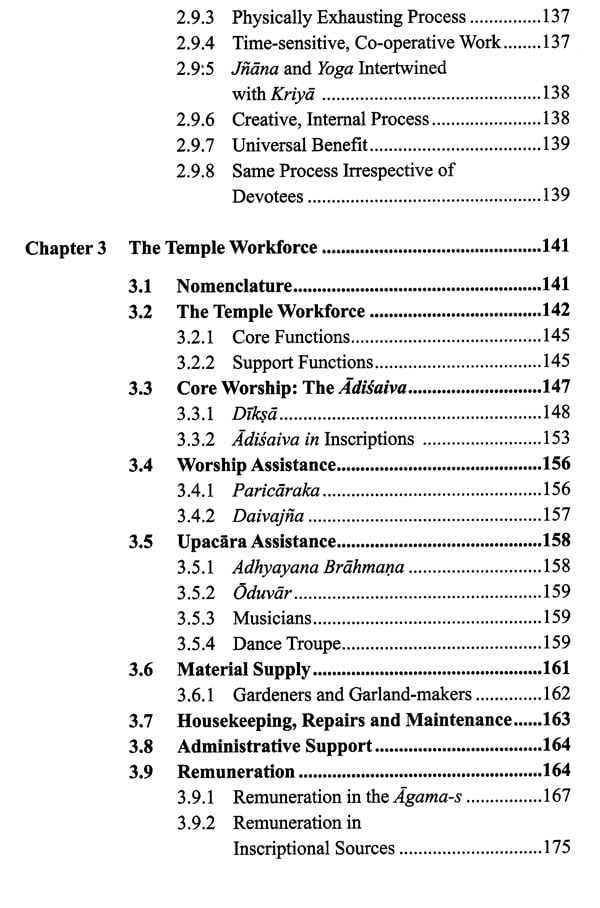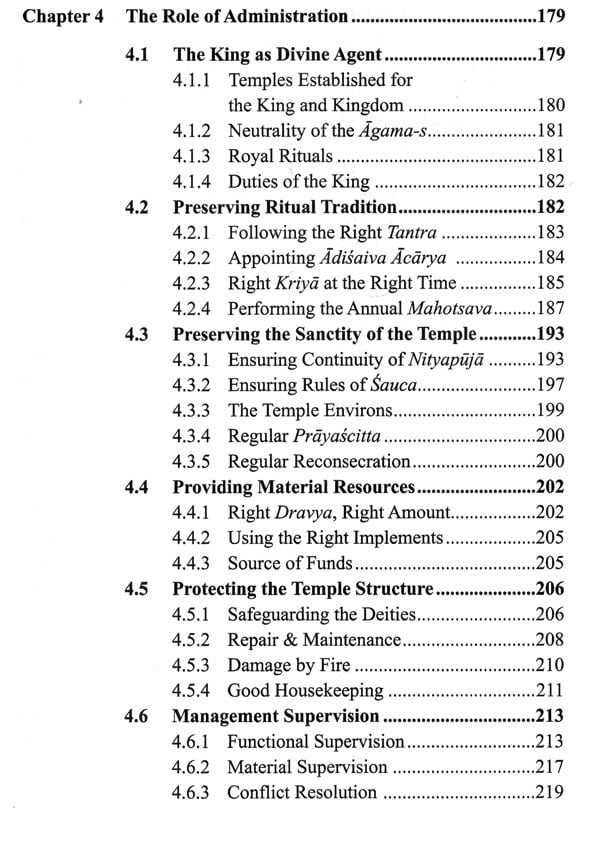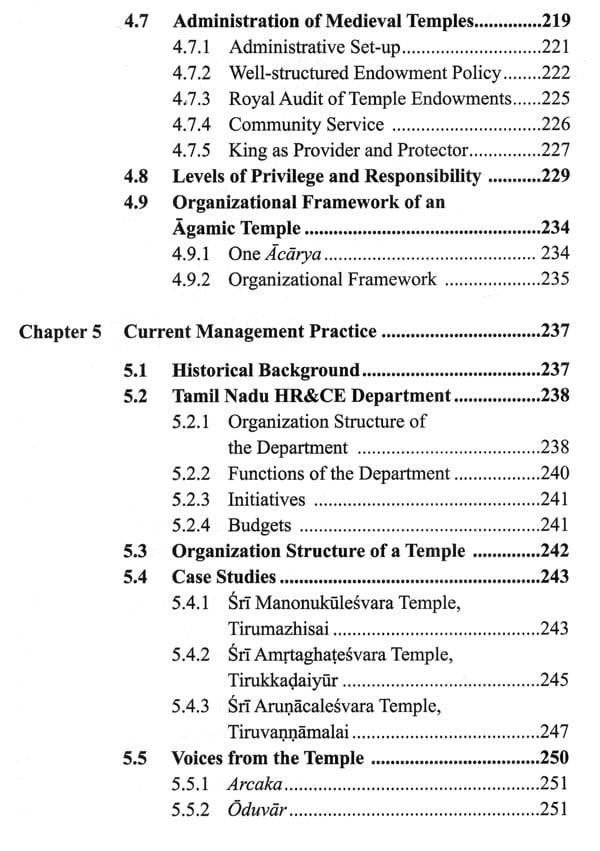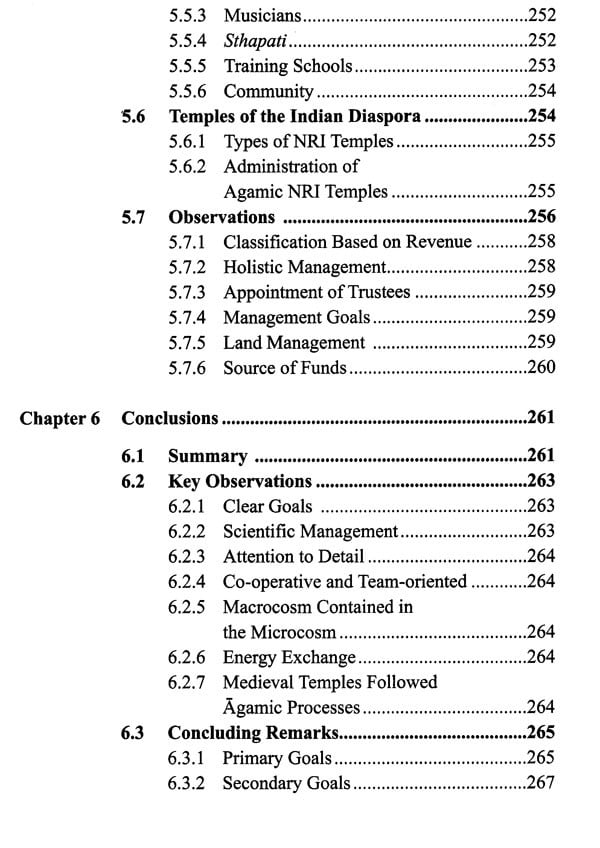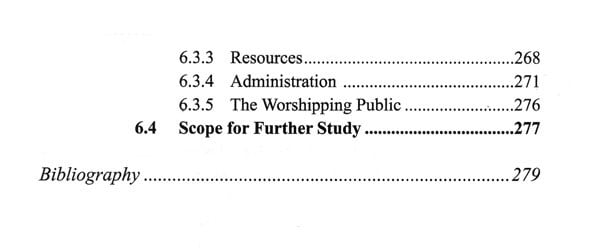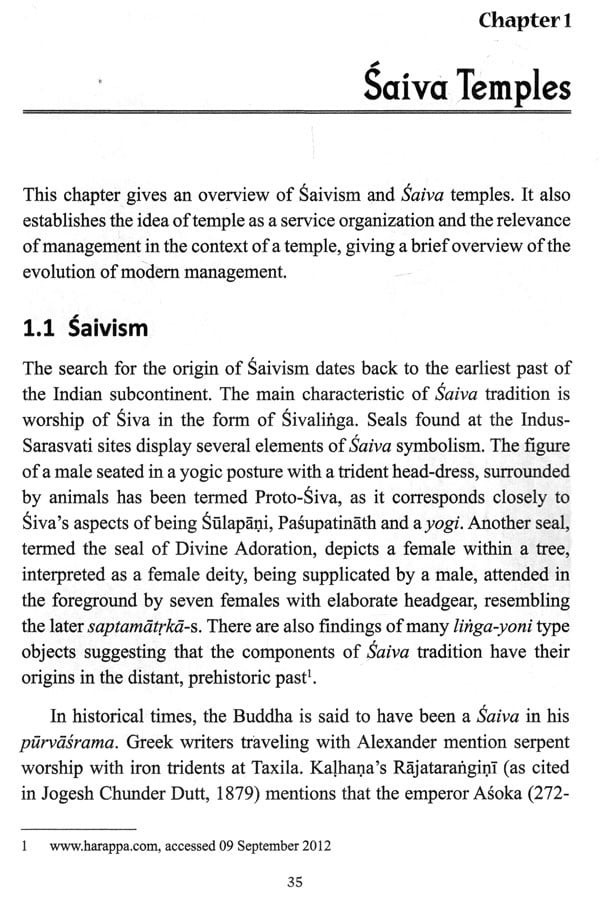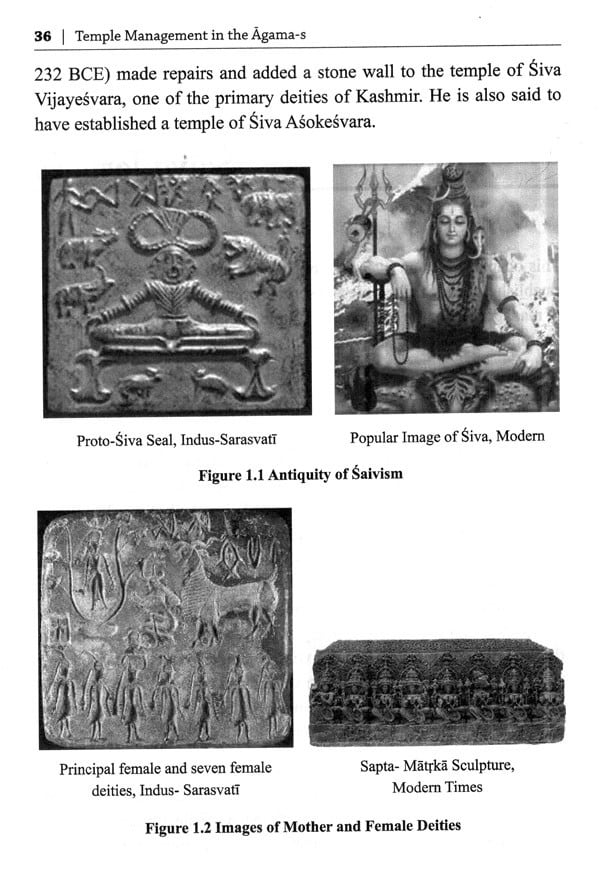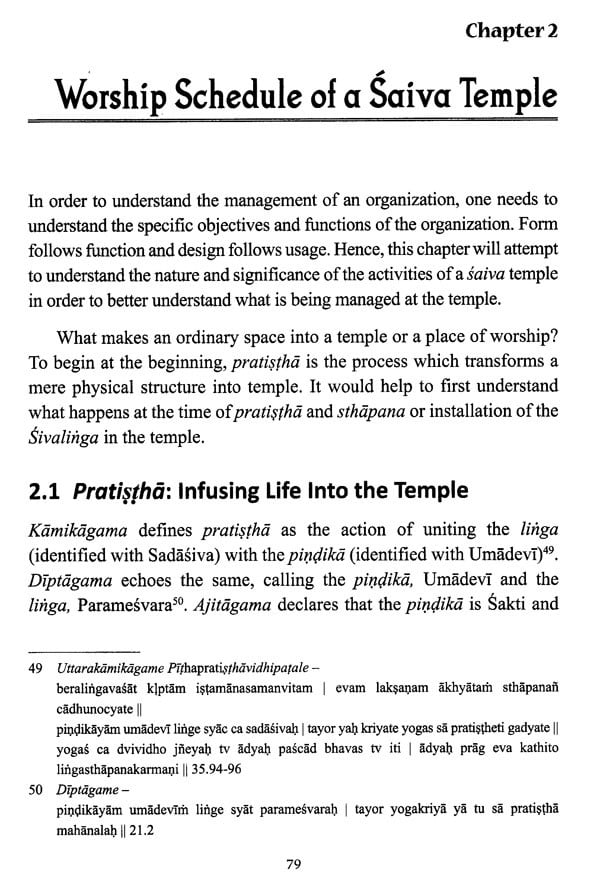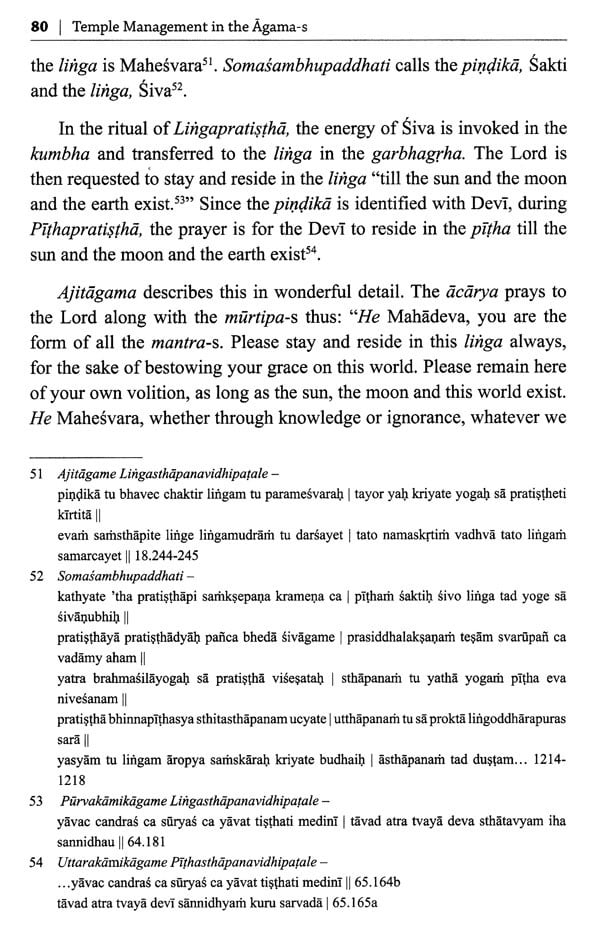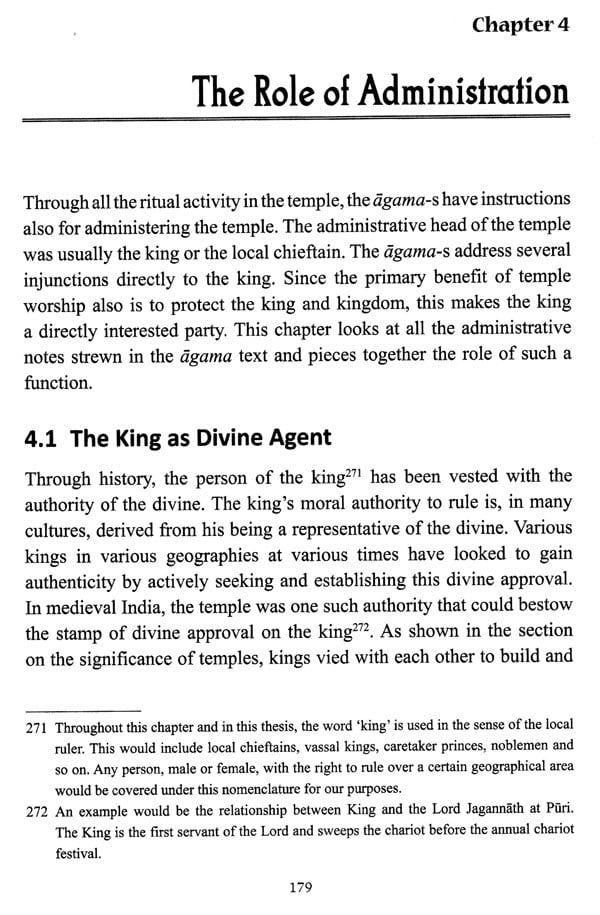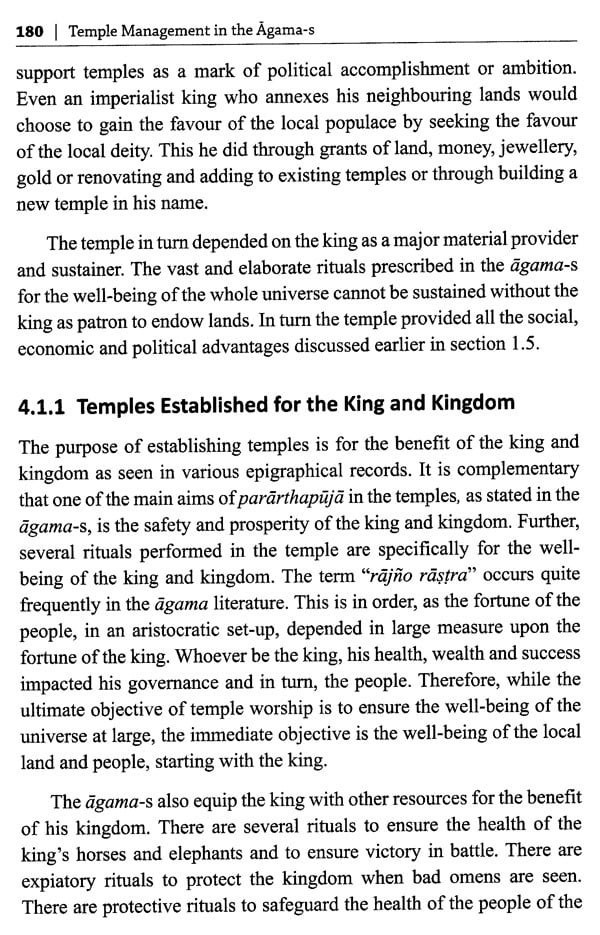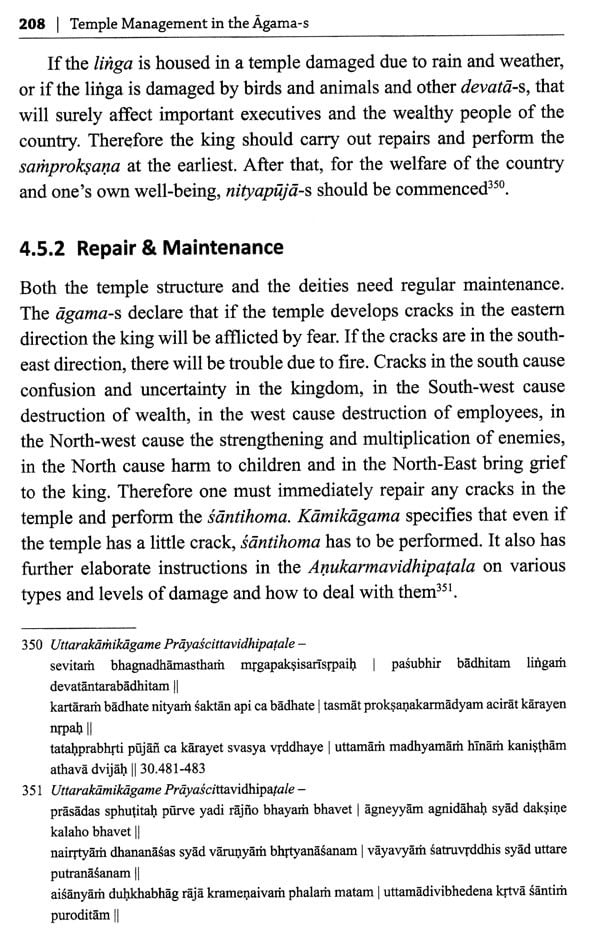
Temple Management in The Agama- S (With Special Reference to Kamikagama)
Book Specification
| Item Code: | NBZ160 |
| Author: | Deepa Duraiswamy |
| Publisher: | Notion Press |
| Language: | ENGLISH |
| Edition: | 2021 |
| ISBN: | 9781637145449 |
| Pages: | 285 (5 B/W Illustrations) |
| Cover: | PAPERBACK |
| Other Details | 9.00 X 6.00 inch |
| Weight | 360 gm |
Book Description
For at least 1500 years, temple design, construction and worship have followed the canon of the āgama-s. Shouldn’t temple management also follow the āgama-s?
Steeped in a history of more than two millennia, the real bequest of India’s ancient temples is that they are still living sacred spaces. The gods that were invoked in these temples more than a thousand years ago, continue to reside in the sanctums and gaze benevolently upon their devotees. The bells ring for morning service as they did a thousand years ago. The ācārya waves the ārati just as another ācārya did a thousand years ago. No other organization in the world can boast of such amazing continuity. The secret to this longevity lies in the āgama-s.
Āgama-s are the traditional canon believed to be as old as the Vedas, with detailed manuals on temple-building, consecration and ritual worship. While the world outside the temples - a world of kings and kingdoms - has changed, temples continue to follow the āgama-s in letter and spirit in their everyday religious function, notwithstanding the many changes in administrative formats.
By studying the activities of the temple, material and manpower required, qualifications and roles prescribed for the temple professionals, this thesis attempts to reconstruct an āgamic temple management framework, using the Kāmikāgama as primary text with other āgama-s, secondary literature and inscriptional evidence as required.
Deepa Duraiswamy holds degrees in engineering and management from the University of Pune and IIM Calcutta. Her desire to understand the āgama-s and make them more accessible for a modern audience led to an inter-disciplinary PhD at the Department of Sanskrit, University of Madras. She hopes to continue exploring this ancient system that seems to be at the core of sanātana dharma in practice.
I registered for an inter-disciplinary PhD only as a way to commit to studying the Saivagama-s. It was my thesis guide Dr. Dash who suggested that I study temple management since it fit well with my background. It turned out to be the best decision because it helped clear my own assumptions that the agama-s contained only ritual injunction. I was astounded by the complete knowledge system of the agama-s, with the temple at the centre, encompassing religious, economic, social, cultural and philosophical systems with a clear final goal and action plan for society. If sanatana dharma has our living temples and our everyday faith at its core, then that dharma finds its roots in the agama literature.
I am sure that Indic Studies this decade will see the study of agama-s getting centrestage.
The topic is also relevant to how we can approach the conservation and protection of temples in a meaningful way. I hope this book sparks off conversations around temple organization, nomenclature for those who serve at temples, compensaation for temple service and other important questions with new information. I hope it challenges our pre-held notions and also helps see the work at the temple in a new light, that can then inform our conversations on the best management framework for our living heritage in the coming centuries.
I am grateful to Sri. Hari Kiran Vadlamani and Indic Academy for believing in this work and offering a publishing grant. Indic Academy has a far-reaching vision ,and a unique implementation model that is sure to hasten the Indic renaissance this decade.
I also thank Arputha, Deepika and the team at Notion Press for their hardwork in bringing out this book.
The living temple tradition is ancient India's legacy to the whole of humanity. It is a complete multidimensional system, giving at once a practical framework for everyday life as well as for the evolution of human consciousness. It is the responsibility of all stakeholders to come together and protect this system in the best way possible, so as to preserve the original intent and outcome envisaged by the agamas.
Unfortunately, studies in Saivism and Saivagamas are not still mainstream with scholarship focused mainly on Veda, Vedanta, Purana, Itihasa and Bhagavad Gita. A select set of scholars, like the late Dr. Helene Brunner and the late Dr. N. R. Bhatt have laid a good foundation in the past decades through the French Institute of Indology, collecting and editing manuscripts that others like Prof. Alexis Sanderson, and Dr. Dominic Goodall have carried forward. However, this is only scratching the surface. There is still a wide scope for serious work in the field of Saivagamas.
A key constraint in academic study is the watertight silos of different specializations. As the canonical texts of Saivism, the Saivagamas contain exhaustive prescriptions for personal and temple worship. However, they are also a treasure trove of information on sculpture, architecture, design, music, dance, city planning and other subjects that are extremely relevant in today's world. In studying a system that has diverse aspects, it is important to bring a multi-disciplinary approach. That is why, I proposed the study of the Saivagama system with a management approach. It is something innovative and never done before. It is my belief that this kind of rigorous study from the lens of a different specialization will bring forward new meanings and contexts that would better our understanding of the field.
I hope this thesis paves the way for many more rigorous Saivagama studies and studies in the temple ecosystem that could then not only improve our collective understanding of our past but also enable us to preserve and protect our heritage for the future.
Dr. D. Deepa is a student of Management, but being born and brought up in a family of Saiva tradition she has acquired a sound knowledge in the subject and has developed great interest and commitment to establish the values of Traditional knowledge. This can very well be judged from the work she has done for her Ph.D. in Sanskrit on interdisciplinary basis. It is needless to say that her earnest labour and hard work will inspire her and others to do more works in the field which needs more explorations.
I am happy that her Thesis is going to be published. I wish her all success in her future endeavor.
Temples are a ubiquitous feature of the Indian landscape. Steeped in a history of more than two millennia, India's hoary temples are vast complexes of concentric corridors around a central shrine of the main deity and peripheral shrines to the attendant deities. The towering temple gopura-s are architectural and engineering wonders. The intricate stone sculptures adorning the pillars and walls are testimony to highly evolved artistic schools. The detailed inscriptions on temple walls are important historical records that bring alive an ancient world of kings and kingdoms, traders and farmers, priests and peasant folk whose lives revolved around the temple. Therefore it follows that these monuments to the highest human thought and aspirations must be preserved in their original splendor for generations to come.
However, temples cannot be preserved as merely physical structures. What is really significant about these ancient temples is that they are still a living sacred space filled with love and devotion, ritual and religion, deities and thronging devotees. The gods that were invoked in these temples many centuries ago continue to reside in the sanctums, preside over their estates and gaze benevolently upon their devotees. The bells ring for morning service as they did a thousand years ago. The acarya waves the arati just as another acarya did a thousand years ago.
The basis of Saiva temples lies in the Saivagama, the canonical texts of Saivism. The agama texts are the philosophical base of the ,Siddhanta school of Saivism, most popular in the south of India, especially in Tamil Nadu. Saivagama-s also contain technical manuals on temple building as well as ritual manuals on worship. Both temple building and ritual worship at the temple continue to follow the agama-s even today.
With time, the world outside the temples - a world of kings and kingdoms - has changed, giving way to invaders, colonizers and finally a modern democratic government. The management of the temples has moved from local kings to invading kings and chieftains to the imperial company agents to finally, the state government. Through all this, the temples continue to follow the ,Saivagama-s in letter and spirit in their everyday religious function, notwithstanding the many changes in administrative formats.
The purpose of this thesis is to analyze what directions, if any, the Saivagama-s contain for the management of the temples that they have such detailed instructions on building and worshipping. What are the aspects of management that the agama-s point to? What, according to the agama-s, need to be managed in the temple? How should this be done? It is probable that unlike in the case of rituals or philosophy, we might not find a direct prescription in the agama-s with regard to temple management. Therefore, the study would attempt to break down various aspects of management and derive a framework based on references to these.
The scope of the thesis is to reconstruct the management framework of temples as suggested by the Saivagama-s. Since the agama-s do not present this directly, the thesis will attempt to deduce this from the activities of the temple, material and manpower required, qualifications and roles for each member of the temple professionals. The study focuses on the Kamikagama out of the twenty eight Saivagama-s. The Kamikagama is one of the primary Saivagama texts and most temples in Tamil Nadu follow either the Kamikagama or the Karanagama. Attempt is also made to offer a brief look into the current management scenario with examples.
The Kamikagama is the primary source for the thesis. Other agama-s, upagama-s or secondary agama-s and paddhati-s or ritual manuals are also referred to when necessary, notable of which are the Karanagama,
Ajitagama, Diptagama, Kumaratantra and Somasambhupaddhati. The thesis looks at select epigraphical sources to validate the agama-s, notably several volumes of the South Indian Inscriptions series.
Other sources are used to understand the historical background to Saivism and saiva temples. Kalhana's Rajatarangini is used to study early temple-building in Kashmir. K. A. Nilakanta Sastri's History of South India and Foreign Notices of South India are also used to understand medieval temple-building in the south. S. Krishnaswami Aiyangar's The Beginnings of South Indian History, Robert Sewell's A Forgotten Empire - Vijayanagar also offers glimpses into south Indian temple history as does K. V. Subrahmanya Aiyar's Historical Sketches of Ancient Dekhan. Surendranath Dasgupta's A History of Indian Philosophy and R. G. Bhandarkar's Vaisnavism, Saivism and Minor Religious Systems give an introduction to Saivism. Prof. Alexis Sanderson throws light on the development of the Saiva tradition and its various schools in medieval times in his books and articles. Dr. Dominic Goodall offers a good overview of Saivagama literature in his critical edition of Bhatta Ramakantha's Kiranavrtti and other works. Prof. S.P.Sabharatnam and Dr. Nandimath also present the Siddhanta ,Saiva school in detail. These sources are used to understand Saivism in greater detail.
The website of the Tamil Nadu Hindu Religious and Charitable Endowments Department is used extensively to understand the structure and functioning of the present management of temples. Direct interviews with temple professionals and practitioners are also used as an input for case studies.
The temple is a service organization that is a complex ecosystem of multi-talented individuals co-operating to serve the living deity and the devotees in the same format that was laid out and followed for centuries. Therefore the management of temples is an important function that needs to help preserve and perpetuate this ecosystem. It is hoped that this thesis would be a valuable addition to the knowledge base of temple practitioners, administrators and scholars alike.
**Contents and Sample Pages**
